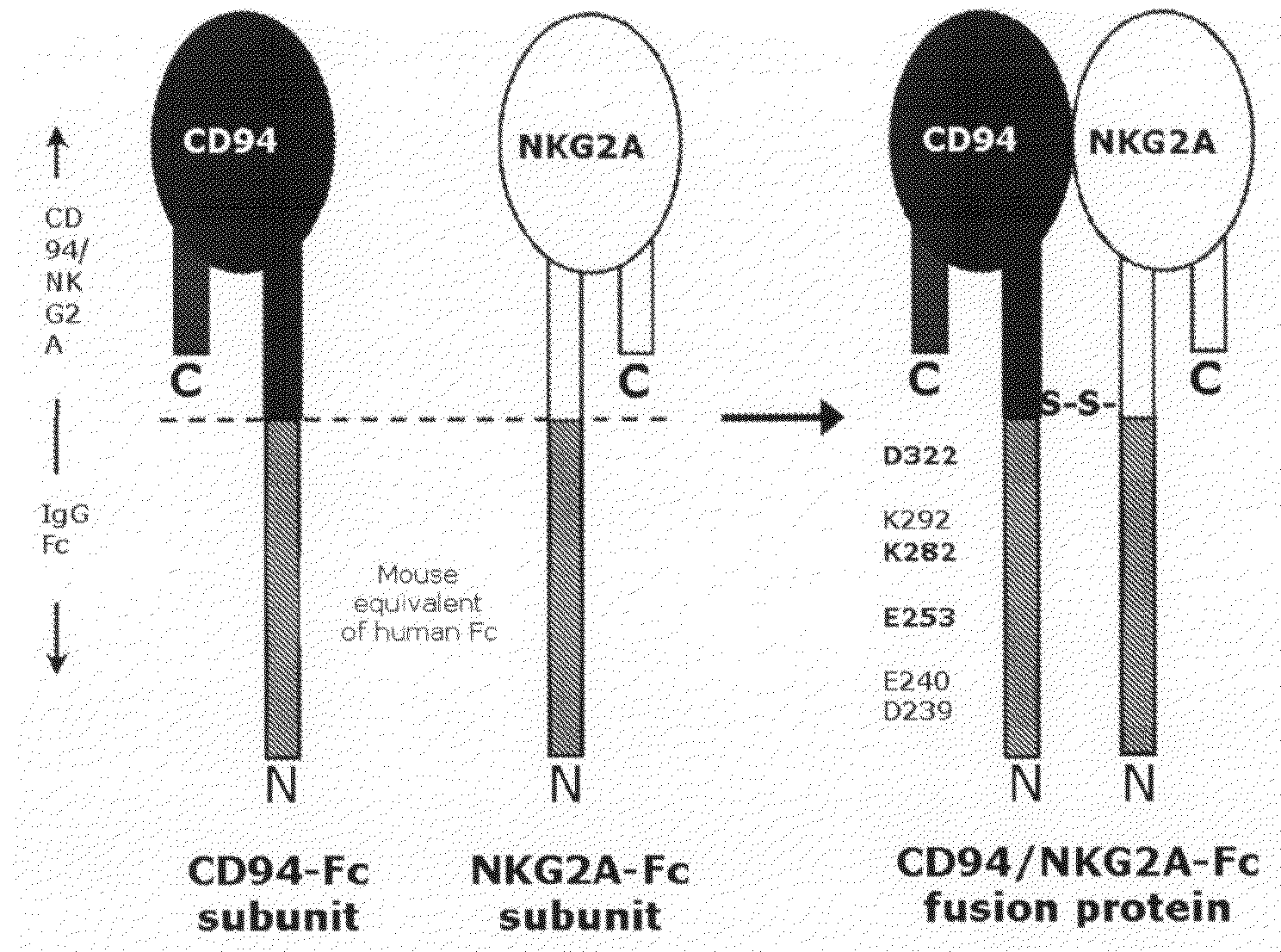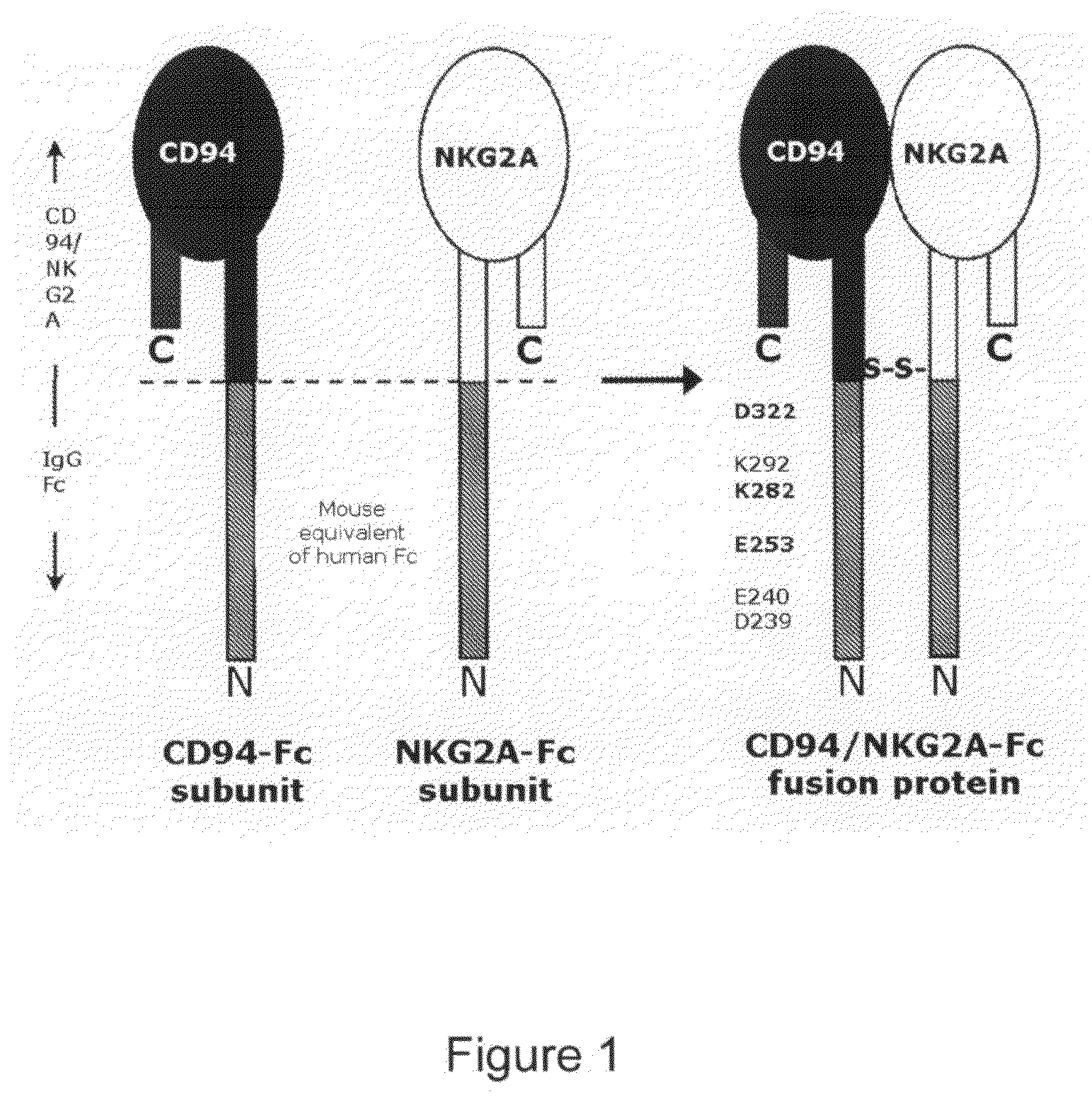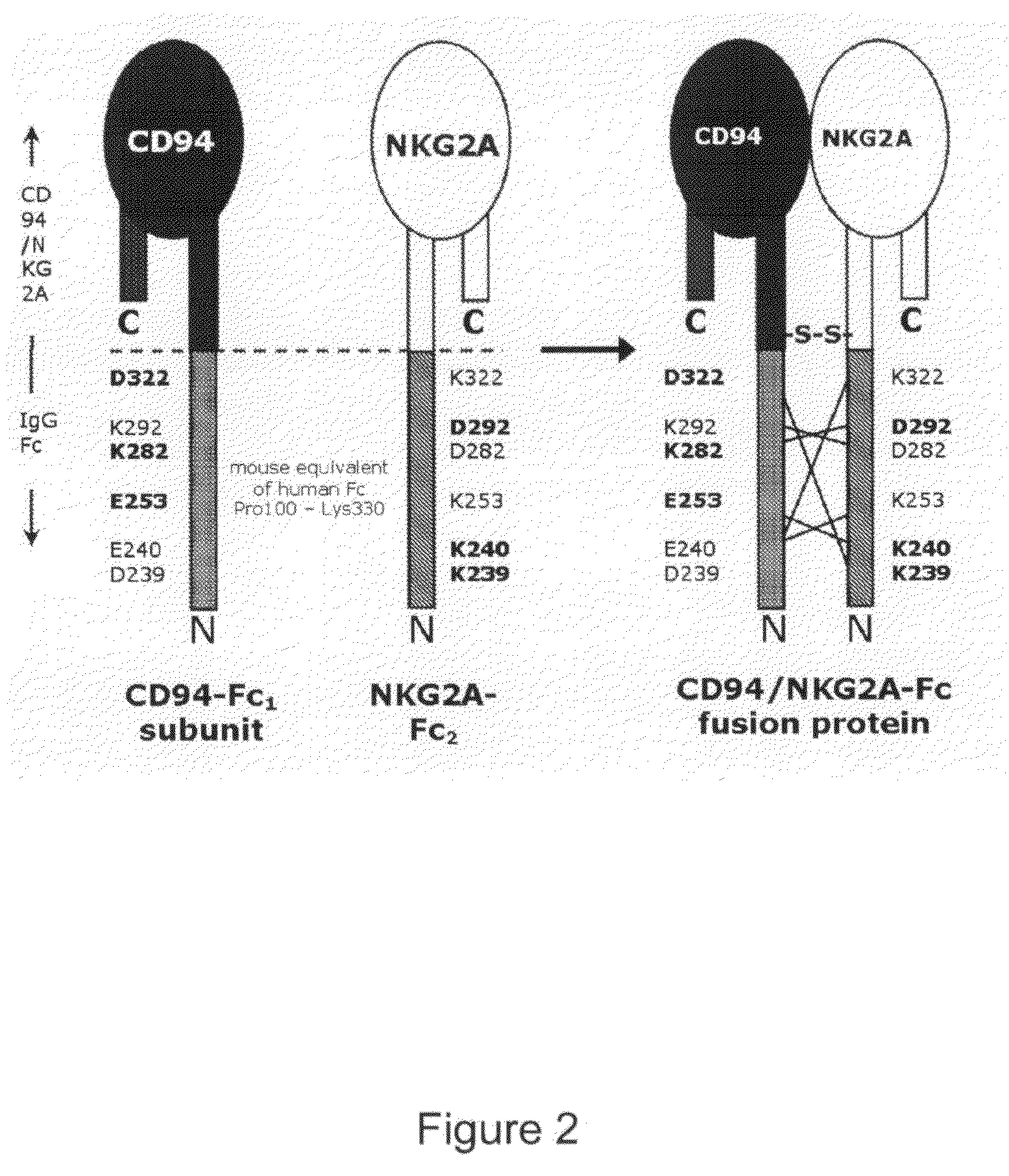Soluble Heterodimeric Receptors and Uses Thereof
- Summary
- Abstract
- Description
- Claims
- Application Information
AI Technical Summary
Benefits of technology
Problems solved by technology
Method used
Image
Examples
example 1
Modelling of CD94 / NKG2A Interaction with HLA-E
[0177]This Example describes in silico modelling identifying CD94 / NKG2A segments covering the interaction with HLA-E. The protein data base (PDB; Protein Data Bank) referred to herein is described in: H. M. Berman, J. Westbrook, Z. Feng, G. Gilliland, T. N. Bhat, H. Weissig, I. N. Shindyalov, P. E. Bourne: The Protein Data Bank. Nucleic Acids Research, 28 pp. 235-242 (2000). PDB identifiers are always 4 alphanumeric characters, e.g., 1NKR & 1OM3, some timesreferred to as 1 NKR.pdb & 1OM3.pdb.
[0178]A model of CD94 / NKG2A complexed with its ligand HLA-E was built in silico. For this, a model of the CD94 / NKG2A heterodimer was built using the X-ray structure of the CD94 homodimer as a homology model (PDB-ID:1B6E). In addition, the resolved crystal structure of HLA-E was used (PDB-ID:1MHE). The complex of CD94 / NKG2A and HLA-E was then built in silico, using the X-ray structure of the related NKG2D-MICA complex (PDB-ID:1 HYR). The complete mode...
example 2
Identification of Amino Acid Residues Responsible for Ionic Interactions in Immunoglobulins
[0181]References to heavy chain constant region position numbers here specifically indicate the position of the wild-type constant region sequence starting from the beginning (N-terminus) of CH1 (similar to Uniprot-id:IGHG1_HUMAN (SEQ ID NO:20). For constant light chain positions, numbering is according to Uniprot-id:KAC_HUMAN (SEQ ID NO:10). ThThe amino acids responsible for the ionic interactions in human IgG1 s were identified using an analysis of X-ray structures available for the CH3-CH3 domain-domain interactions of both the GM and KM allotypes, and X-ray structures available for CH1-CKappa and CH1-CLambda interactions.
[0182]Specifically, the following KM X-ray structures were analysed: 1HZH, 1ZA6, 1OQX, 1OQO, 1L6X; the following GM X-ray structures were analysed: 1T89, 1T83, I1X, 1H3X; the following CH 1-Ckappa X-ray structures were analysed: 1TZG, 1HZH; and the following CH1-Clambda X-...
example 3
Cloning of Soluble Human CD94 (hCD94) and Human NKG2A (hNKG2A)
[0210]Human CD94 (hCD94) and human NKG2A (hNKG2A) were cloned from a human NK cDNA library purchased from Spring Bioscience (#PHD-138). Primers were designed using sequences from the NCBI database with accession numbers U30610 (hCD94) and AF461812 (hNKG2A). Primers used for hCD94 were
(forward; SEQ ID NO: 40)5′ GGATCCTCTTTTACTAAACTGAGTATTGAGCCAGC,and(reverse, SEQ ID NO: 41)5′ GCGGCCGCAGATCTATTAAATGAGCTGTTGCTTACAGATATAACG.
[0211]Primers used for hNKG2A were
(forward, SEQ ID NO: 42)5′GGATCCCAGAGGCACAACAATTCTTCCCTG(reverse, SEQ ID NO: 43)5′GCGGCCGCAGATCTATTAAAGCTTATGCTTACAATG.
[0212]The forward primers contained a BamHI restriction site and the reverse primers contained Notl and Bglll restriction sites. The products were amplified using a touch-down PCR-procedure.
[0213]Soluble hCD94 resulted in a 438 bp fragment that was cloned into pCR4blunt-Topo and sequence verified. Soluble hNKG2A (405 bp) was cloned into pCR2.1-TOPO and cor...
PUM
| Property | Measurement | Unit |
|---|---|---|
| Solubility (mass) | aaaaa | aaaaa |
Abstract
Description
Claims
Application Information
 Login to view more
Login to view more - R&D Engineer
- R&D Manager
- IP Professional
- Industry Leading Data Capabilities
- Powerful AI technology
- Patent DNA Extraction
Browse by: Latest US Patents, China's latest patents, Technical Efficacy Thesaurus, Application Domain, Technology Topic.
© 2024 PatSnap. All rights reserved.Legal|Privacy policy|Modern Slavery Act Transparency Statement|Sitemap



